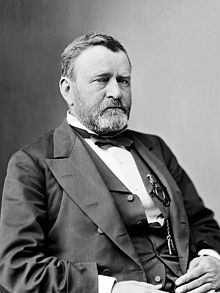The reason for his call was that he was feeling a lot of anxiety and frustration. His biggest area of concern was that his employees didn’t seem to “get it.” They weren’t working hard enough, didn’t seem truly motivated, took long lunch breaks, went home early, and were making bone-headed mistakes – mistakes that the CEO (who is very technically savvy himself) would have to constantly step in and fix. “What should I do?” he asked me. “What will motivate them to perform faster, better, and smarter? Should I offer more stock options? Cash bonuses? Fire some people and set an example?” “No,” I told him, “None of those things are going to really solve your problem. If you want higher performance, the solution is to quit trying to motivate your employees and find out what already motivates them.”
The Myth of Motivation
Quit trying to motivate people. There’s absolutely nothing you can do to motivate others. People are already intrinsically motivated, engaged, and interested. In fact, when you try to motivate people by offering incentives, threats, bribes, and rewards, you’re actually creating a disincentive to work and lowering job satisfaction and productivity.1.If you doubt that people are naturally motivated, or perhaps you’re thinking of someone who doesn’t appear to be engaged, creative, or interested at all, I challenge you to look a little deeper. When you do, you’ll see that everyone is highly engaged, motivated, and proficient at something. Here’s one small example. I have a friend whose ten-year-old son is really struggling in school. He’s a sweet kid but at school he acts listless and disinterested and seems unable to keep up with his homework. Last year, the school principal called the parents in and explained that their son was going to be asked to leave the school unless some drastic changes took place. Based on the recommendation of the school counselors, the parents placed the child on medication, hired a tutor, put him into therapy, and created a series of incentives and punishments around his school work. So far, the boy has made some progress and he’s been able to remain in school. But my friend confesses that it’s a constant struggle to have him stay on top of his homework, adjust his medication, keep him motivated, and generally help this little boy thrive. It’s clear that managing the situation has a tremendous cost for the entire family.
I really feel for my friend and his family. It sounds stressful and exhausting on multiple levels. I imagine many organizational managers struggle in a similar vein trying to get some of their employees to really “get it” and “get on board with the program.” When I heard this story, I asked, “OK, so what is your son interested in? Where does he naturally seem to put his energy and attention?” My friend’s reply was telling: “Oh yeah, it’s video games. He’s super interested and passionate about playing his XBox. He studies and reads about the games constantly. He always wants to talk about them and play online with his friends. It’s driving me nuts. We have to limit his playing time and it’s a constant fight between us.”
I tried to point out the contradiction: “So on the one hand, your son is listless and unmotivated when it comes to his school work. On the other, he’s passionate and self-directed in his pursuit of mastering video games. It doesn’t seem that your son lacks motivation. On the contrary, he’s highly motivated, studious, proficient, and shows an extreme amount of skill development. If his school work was designed like a video game, he could be getting straight As. Your son isn’t suffering from a lack of motivation. He’s suffering from a current school setting that doesn’t align with his skills, motivation, and interests. If you were able to change the setting, such as exposing him to a different school or different curriculum, you’d realize that your son has plenty of motivation, determination, and drive to succeed.”
In this scenario, the parents, the counselors, and the school are missing out on the critical difference between motivation and setting. The boy doesn’t need drugs and discipline to be motivated. He’s already extremely motivated, just not around the things his parents and teachers want him to focus on. The same thing is true for your employees. Each person in your company is interested, self-directed, and self-motivated by something. The real question is this: Are they naturally talented, motivated and interested in the things you want them to be? It’s a subtle but profound difference.
Everybody Get in Your Genius Zone!
Each of us has a “genius zone” or a range of activities and interests in which we excel, that naturally add to our energy and joy, and that inspire us to further develop our capabilities. When our work is spent mostly within our genius zone, we are highly productive, happy, engaged, and self-motivated. When our work is misaligned with our genius zone, we are less productive, unhappy, stressed, and feel burdened. For example, if an employee excels at processing work (pSiu), then give them more assignments involving process-type work (pSiu). If someone enjoys and is strong at interacting and empathizing with people (psiU), then try to give them opportunities to interact with customers (psiU). The point is, once you’re aware of what someone truly likes and excels at, to the extent possible, align them with job functions that give them the opportunity to do just that.If, however, there is a complete mismatch between an individual’s genius zone and the work at hand, rather than fixing the problem with carrots or sticks, the best course is to find a better fit as soon as possible. In other words, if the demands of the job are diametrically opposite to what the individual is energized by, and if there are no other suitable roles available, then it is best to help this person find another job or role, either within or outside the organization. You’ll be shocked at what happens when you align someone’s role into a setting that supports their respective genius zone. In fact, you may no longer even recognize them.
For example, in 1860, in the frontier town of Point Pleasant Ohio, there was questionable looking store clerk in his early thirties. According to reports, he wore a grim expression, disheveled clothes, and caused lots of consternation among the local townspeople. First, there were rumors that he had once served in the military but resigned under a dark cloud. Next, it was said, he tried farming but failed in spectacular fashion. Then he dabbled in real estate and failed again. Now here he was in Point Pleasant working in his father’s leather-good store. To hear the townspeople tell it, he was a sorry excuse for a merchant though. He couldn’t sell and didn’t know much at all about his father’s wares. There were also rumors that he had a big problem with whiskey. Then in 1861 something cataclysmic happened. The Civil War broke out. Without a penny to his name and with limited future prospects, this “failed” young man enlisted as a volunteer. Less than two years later, he was promoted to major general. Eventually, he became president of the United States. His name was Ulysses S. Grant.2.What caused Ulysses S. Grant to transform from an impoverished failure, into the winning general of the Civil War, and ultimately into the President of the United States? You guessed it. The Civil War. Once the Civil War broke out it radically changed the setting or surrounding conditions. With a change in setting, Grant was then able to apply his innate motivation, skills, and talents — and quickly rose up the ranks. But notice that without the corresponding shift in setting, one would never have known General Grant’s real capabilities. Notice too that no amount of incentives, bonus plans, job training programs, coaching, or motivational tactics would have made a meaningful difference in the life of General Grant. Instead, he likely would have remained a surly drunk frustrated at his life conditions and lack of opportunities rather than a hero and a president. So yes, you can attempt to change or influence behavior by offering incentives, job training programs, coaching, or motivational tactics. But the truth is, just like General Grant, your employees will either thrive or fail due to the setting in which they work and the opportunities it presents. So stop thinking about how you can motivate your employees! It’s like pushing water uphill. You’ll expend a lot of energy with little ROI. Instead, find out how they are already motivated and then align their strengths with the work that needs to be performed – or, find employees who are a better fit.
If this seems airy-fairy or out of the question in your current work setting, then I’d challenge you to look deeper still. Even if you run a toxic industrial factory farm surrounded by blood, suffering, and unhealthy employees or a sweatshop run on child labor at $.10 cents an hour (I’m going for the most dismal settings I can imagine), you still have a choice to make. You can take the lowest common denominator and try to control, cajole, monitor, and “motivate” your staff. (If this is your current approach, how’s it really working for you anyway?) Or you can align people into jobs that fit their natural strengths and interests. If you do that, then your job of “managing” shifts from babysitting, firefighting, and cat herding to identifying and aligning strengths, communicating clear expectations, and providing constructive feedback. It may not feel easy, in the short term, to align people’s roles with their respective genius zones, but if you want self-motivated, creative, and high-performing people for the long run – and actually enjoy managing them – it’s the only choice you can make.
From a manager’s perspective, then, the real question is not how to motivate or incentivize employees to perform. The real question is, “where is the natural affinity and alignment between this person’s style, capabilities, and interests and the work that needs to be done?” The reason for this question should make sense intuitively. When there’s alignment between an individual’s natural motivations, skills, and interests and the current work setting, that person will enjoy and thrive in their role. When there isn’t, they’ll struggle and underperform or even fail.
Don’t make the mistake of thinking otherwise. You can’t change the fundamental nature of your employees any more than a parent can change the fundamental nature of their children. Guide it? Yes. Influence it? Certainly. Change it? Not a chance.
What About Compensation?
You might be asking, “But what about compensation, bonuses, stock-options, profit sharing, performance reviews, career paths, retention tactics, and all the other elements of modern human resources theory? Aren’t these things critical too in creating aligned and high-performing employees?” The answer is no, not really. It’s obviously important to pay fair compensation, to treat people with respect and dignity, to provide constructive feedback, to share the rewards of success, and to help people find fulfillment through their work – and there are many tactics that a leader can choose that are appropriate to the time, place, and organizational culture. There’s no one right answer. But don’t confuse these tactics with the fundamentals of aligning people into roles that they naturally thrive at. If you get and keep alignment between a person’s role and their genius zone, then they will be naturally motivated, engaged, learning, and growing. The HR tactics can be kept very simple. If there’s no alignment, on the other hand, then even the most compelling compensation plan isn’t going to inspire high productivity for long.If you still don’t believe that compensation doesn’t dictate performance, just take a look at organizational cultures in your local church, school, softball team, or volunteer organization. What you’ll find is very hard-working, dedicated people who, even in the face of obstacles, are committed to their cause. The tragic thing is that most companies that are failing to reach their full potential actually do the opposite of what they should. They put their efforts into motivational tactics, hiring analysis, compensation plans, performance reviews, and that kind of thing but skip out on the most critical aspect of getting people to perform at a high level: matching them to their strengths. It’s like putting the cart before the horse. Sure, you can do it, but it’s not going to cause the cart to go anywhere.
Summary
When it comes to motivating people – don’t. Instead, put them in situations where their innate genius zone comes to life and watch them thrive. If you’re consumed by a focus on compensation structures and stock vesting schedules, you’re on the wrong track entirely. Instead, focus on aligning the work that needs to be performed with people’s natural strengths and interests. The result will be improved creativity, faster execution, and an innate drive to perform at a high level. If you can accomplish this, your job as a manager will become so much easier – not to mention a lot more fun and satisfying.
Back to Tutorials.
1. Some informative books on the subject of incentives causing more harm than good include Alfie Kohn’s Punished by Rewards: The Trouble with Gold Stars, Incentive Plans, A’s, Praise, and Other Bribes and a Whole New Mind by Daniel Pink.
2. The Lucifer Principle by Howard Bloom.





